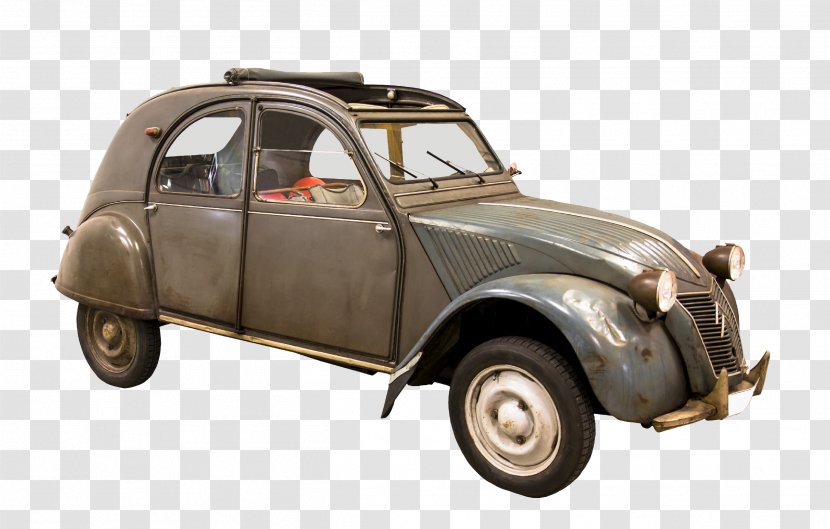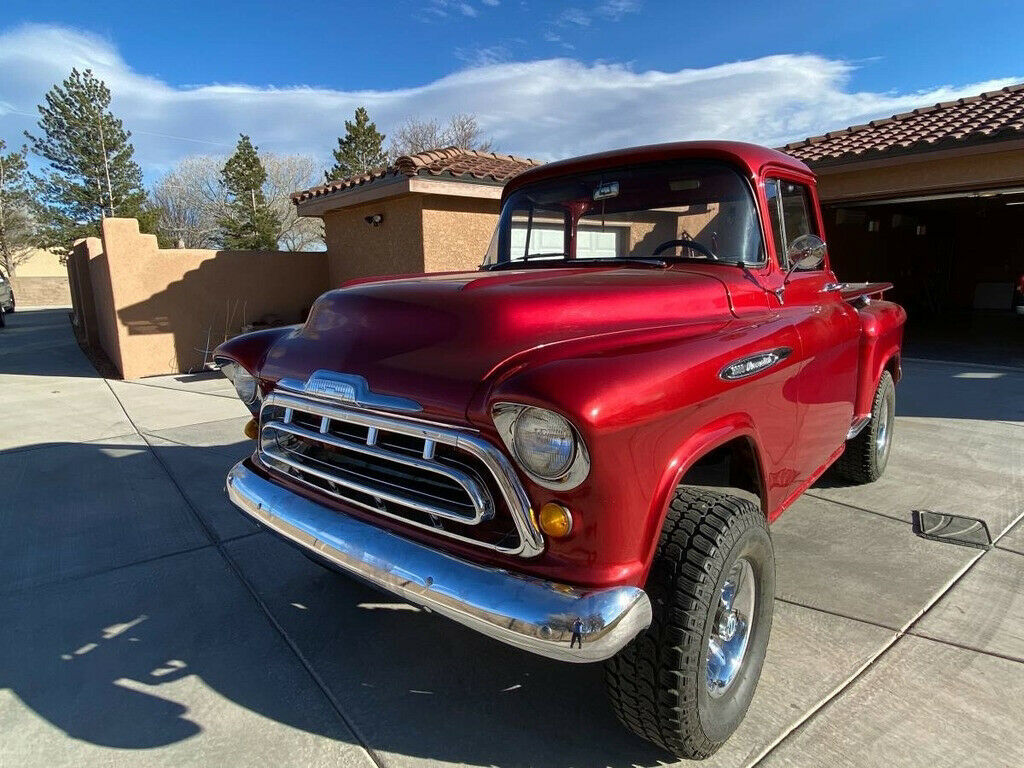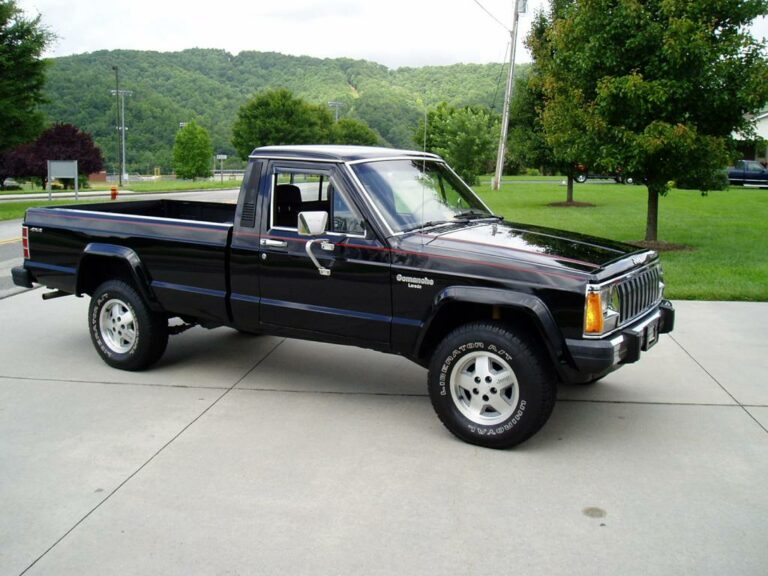Antique Jeep Trucks For Sale: A Comprehensive Buyer’s Guide to Iconic American Workhorses
Antique Jeep Trucks For Sale: A Comprehensive Buyer’s Guide to Iconic American Workhorses /jeeps.truckstrend.com
The rumble of a vintage engine, the unmistakable silhouette of a flat-fendered grille, and the promise of rugged adventure – for many, the allure of an antique Jeep truck is irresistible. More than just a vehicle, these machines are rolling pieces of American history, embodying a spirit of utilitarianism, resilience, and unpretentious capability. From the post-war Willys pickups that helped rebuild a nation to the robust J-Series Gladiators that conquered countless terrains, antique Jeep trucks represent a golden era of automotive design and engineering.
This comprehensive guide delves into the world of antique Jeep trucks for sale, offering insights for both seasoned collectors and first-time buyers. We’ll explore their enduring appeal, define what qualifies as "antique," survey the most sought-after models, and provide practical advice on finding, evaluating, and owning these magnificent vintage workhorses. Whether you dream of a meticulously restored showpiece, a reliable weekend cruiser, or a challenging restoration project, understanding the nuances of this unique market is key to making an informed and satisfying purchase.
Antique Jeep Trucks For Sale: A Comprehensive Buyer’s Guide to Iconic American Workhorses
The Enduring Appeal of Antique Jeep Trucks
The legacy of Jeep trucks began with Willys-Overland, the company that famously produced the military "Jeep" during World War II. Following the war, Willys leveraged this reputation for durability and versatility to introduce civilian vehicles, including an iconic line of pickup trucks and wagons. These early models, and their successors under Kaiser-Jeep and American Motors Corporation (AMC), quickly cemented their reputation for being tough, go-anywhere vehicles, equally at home on the farm, at the construction site, or exploring rugged trails.
Their appeal today stems from several factors:
- Nostalgia and Heritage: Owning an antique Jeep truck connects you directly to a pivotal era of American industry and ingenuity.
- Unmatched Ruggedness: Built with simplicity and durability in mind, these trucks were designed to withstand harsh conditions and heavy use.
- Iconic Design: Their distinctive styling, from the classic seven-slot grille to their sturdy, no-nonsense lines, makes them instantly recognizable and universally admired.
- Utility and Versatility: Many models still offer impressive hauling and towing capabilities, and their 4×4 systems (when equipped) provide exceptional off-road prowess.
- Community: The antique Jeep community is vibrant and supportive, offering a wealth of knowledge, parts sources, and camaraderie.

Defining "Antique": What Qualifies?
The term "antique" when applied to vehicles typically refers to a specific age range, though this can vary by state for registration purposes. Generally, a vehicle is considered "antique" or "classic" if it is 25 years old or older. Some states have a 20-year threshold for "classic" and a 45-year threshold for "antique," often granting special license plates and reduced registration fees. For the purposes of this article, we’ll focus on Jeep trucks that broadly fall into the pre-1980s era, encompassing models truly reflecting the historical "antique" designation.
This generally includes:

- Willys-Overland Pickups (1947-1965): The quintessential antique Jeep truck.
- Jeep FC (Forward Control) Series (1956-1965): Unique cab-over-engine design.
- Kaiser Jeep M715 (1967-1969): Military-grade 1.25-ton truck often converted for civilian use.
- Early Jeep Gladiator / J-Series (1963-early 1980s): The first full-size Jeep trucks, with early models now firmly in the antique category.

Types and Models of Antique Jeep Trucks to Look For
Understanding the different models is crucial for narrowing down your search. Each offers a unique blend of history, design, and capability.
-
Willys-Overland Pickup (1947-1965):
- Description: The original civilian Jeep truck, known for its flat-fendered styling, simple lines, and robust construction. Available in 2WD and 4WD. Early models often had four-cylinder "Go-Devil" engines, later moving to "Hurricane" F-head and even six-cylinder options.
- Appeal: Iconic, highly collectible, relatively simple to work on.
- Considerations: Prone to rust, particularly in the bed and frame rails. Original parts can be challenging to find for specific trim pieces, but mechanical components are often shared with other Willys vehicles.
-
Jeep FC (Forward Control) Series (1956-1965):
- Description: A distinctive cab-over-engine design, offering excellent visibility and a compact footprint for its impressive cargo capacity. Available in various wheelbases (FC-150, FC-170). Powered by four-cylinder and six-cylinder engines.
- Appeal: Unique appearance, highly functional as a work truck, rare.
- Considerations: Rust is a major concern, especially in the cab and floorboards. Engine access is awkward. Parts are scarcer than for other Willys models.
-
Jeep Gladiator / J-Series (1963-Early 1980s):
- Description: Jeep’s entry into the full-size pickup market. Originally named "Gladiator," it became "J-Series" in 1971. These trucks were more comfortable and car-like than the Willys pickups, featuring independent front suspension on early 2WD models and a more conventional truck chassis for 4WD. They offered a range of engines, including the Tornado OHC inline-six, AMC straight-sixes, and various AMC V8s.
- Appeal: More modern driving experience than earlier models, strong aftermarket support for parts and upgrades, good towing/hauling capabilities.
- Considerations: Rust can still be an issue, especially in the bed and rocker panels. Some unique parts for early Gladiators (e.g., grille, trim) can be hard to source.
-
Kaiser Jeep M715 (1967-1969):
- Description: A military-spec 1.25-ton truck developed for the US Army, based on the civilian J-Series chassis but significantly beefed up. Known for its rugged looks, huge tires, and basic interior. Powered by the "Tornado" OHC inline-six.
- Appeal: Incredibly robust, unique military heritage, commanding presence. Popular for overland builds and off-road enthusiasts.
- Considerations: Very sparse interior, notoriously slow, parts for the specific military components can be difficult to find. Many have been heavily modified or "restomodded."
Where to Find Antique Jeep Trucks For Sale
The hunt for your ideal antique Jeep truck can be as exciting as owning one. Here are the best places to look:
-
Online Marketplaces & Auction Sites:
- eBay Motors: A wide variety of conditions, from project vehicles to restored examples.
- Hemmings Motor News: Premier site for classic and antique vehicles, often featuring higher-quality listings.
- ClassicCars.com: Another excellent resource for vintage vehicles.
- Bring a Trailer (BaT): Features curated auctions for higher-end, well-documented vehicles, often achieving premium prices.
- Facebook Marketplace/Groups: Local listings, often with active communities dedicated to specific Jeep models (e.g., "Willys Pickup Owners," "J-Series Truck Owners").
-
Specialized Forums & Clubs: Online forums dedicated to Willys, J-Series, or general vintage 4x4s are invaluable. Members often list vehicles for sale, and you can tap into a wealth of knowledge for pre-purchase advice. Examples include The CJ2A Page (covers Willys trucks), FSJ Network (Full Size Jeeps).
-
Auction Houses: For top-tier, professionally restored antique Jeep trucks, major auction houses like Barrett-Jackson or Mecum Auctions can be a source, though prices will reflect the quality and rarity.
-
Specialty Dealers & Restoration Shops: Many businesses specialize in buying, restoring, and selling vintage 4x4s. While prices may be higher, you often get a thoroughly vetted vehicle or a professional restoration.
-
Word-of-Mouth & Local Classifieds: Don’t underestimate the power of local connections. Talk to enthusiasts, attend local car shows, and check small-town classifieds. Sometimes, the best finds are hidden in plain sight.
What to Consider Before Buying: A Buyer’s Guide
Purchasing an antique vehicle requires careful consideration. Here’s a checklist of vital aspects:
-
Condition is King:
- Rust: The #1 enemy. Check frame rails, floorboards, rocker panels, bed mounts, cab corners, and fenders thoroughly. Surface rust is manageable; structural rust requires extensive and costly repair.
- Engine & Drivetrain: Does it run? Does it smoke? Are there strange noises? Check for leaks. Test the 4×4 system (if applicable). Inspect the transmission and differentials.
- Brakes & Steering: Are they responsive? Does the truck pull to one side? Original drum brakes can be weak; power steering was often optional or absent.
- Electrical System: Check all lights, gauges, wipers, and heater. Wiring can degrade over time, leading to frustrating electrical gremlins.
- Interior & Glass: Assess the condition of the seats, dashboard, headliner, and door panels. Look for cracks or delamination in the glass.
-
Originality vs. Restomod vs. Project:
- Original/Preserved: A vehicle that retains its factory components and patina. Often valued by purists, but may require more mechanical attention for reliability.
- Restored: Brought back to factory specifications, often to a very high standard. These command premium prices.
- Restomod: Modern components (engine, transmission, suspension, brakes) integrated into the classic body. Offers modern driveability and safety but sacrifices originality.
- Project: A non-running or heavily deteriorated vehicle requiring significant work. Cheapest to buy, but most expensive and time-consuming to restore. Be realistic about your skills and budget.
-
Paperwork: Ensure the seller has a clear, transferable title. Verify the VIN matches the title and the vehicle. Check for any liens.
-
Budget Beyond Purchase Price:
- Restoration Costs: Can easily exceed the purchase price, especially for professional work. Budget for bodywork, paint, engine/transmission rebuilds, interior, and unforeseen issues.
- Parts: Research parts availability and cost for your chosen model.
- Insurance: Classic car insurance is often more affordable than standard auto insurance but has specific requirements.
- Maintenance: Older vehicles require more frequent and specialized maintenance.
-
Parts Availability: Some models (like Willys Pickups and J-Series) have decent aftermarket support and shared components with other Jeep models. Rarer models like the FC or M715 can be a challenge for specific parts. Join owner forums to tap into collective knowledge for sourcing.
-
Pre-Purchase Inspection (PPI): If possible, always arrange for a qualified mechanic specializing in vintage vehicles to inspect the truck before purchase, especially if buying sight unseen or from a distance.
Restoration vs. Preservation vs. Daily Driver
Once you own an antique Jeep truck, you’ll need to decide its future purpose:
- Full Restoration: This involves disassembling the vehicle, addressing all rust and body imperfections, rebuilding or replacing all mechanical components, and repainting to original or better-than-original standards. It’s the most expensive and time-consuming path, often resulting in a show-quality vehicle.
- Preservation: The goal here is to maintain the vehicle’s original condition and patina while ensuring mechanical soundness and safety. It involves addressing critical mechanical issues, ensuring reliability, and stopping further deterioration, but not necessarily a full repaint or cosmetic overhaul. This approach often retains the vehicle’s unique character and history.
- Restomod/Custom Build: This popular option combines the classic aesthetic with modern performance, comfort, and safety. It often involves engine swaps, upgraded suspensions, disc brakes, power steering, and air conditioning. While it alters originality, it makes the truck much more practical for regular use.
- Daily Driver: If you intend to use your antique Jeep truck regularly, reliability and safety are paramount. This might involve selective upgrades (e.g., electronic ignition, modern tires, seatbelts, basic safety checks) without going full restomod. Be prepared for less comfort and convenience than modern vehicles.
Challenges and Solutions
Owning an antique vehicle comes with its unique set of challenges, but most have viable solutions:
- Challenge: Rust.
- Solution: Thorough pre-purchase inspection to avoid heavily rusted vehicles. For existing rust, professional welding and panel replacement are often necessary. Rust preventative coatings can help protect newly restored metal.
- Challenge: Parts Scarcity.
- Solution: Network with owner clubs and forums. Seek out specialized vintage Jeep parts suppliers. Be prepared for New Old Stock (NOS) parts to be expensive. Fabrication or adapting parts from other vehicles may be necessary for very rare components.
- Challenge: Mechanical Issues.
- Solution: Learn basic mechanics or find a reputable shop specializing in vintage vehicles. Many common issues (carburetor tuning, ignition timing, brake adjustments) can be addressed with patience and the right tools. Consider upgrades like electronic ignition for improved reliability.
- Challenge: Lack of Modern Safety Features.
- Solution: Install aftermarket three-point seatbelts. Upgrade to disc brakes (often a popular restomod modification). Ensure all lights and signals function correctly. Drive defensively and be aware of the truck’s limitations compared to modern vehicles.
- Challenge: Poor Fuel Economy.
- Solution: Accept it as part of the antique experience, or consider an engine swap (restomod) to a more fuel-efficient modern powertrain.
Antique Jeep Trucks For Sale: Estimated Price Ranges
Prices for antique Jeep trucks vary dramatically based on model, year, condition, originality, and location. The table below provides a general guide. "Project" means the vehicle is largely non-running or requires extensive work. "Driver" means it’s running and drivable, but likely needs work. "Restored" means it’s in excellent cosmetic and mechanical condition.
| Model | Year Range | Condition: Project (USD) | Condition: Driver (USD) | Condition: Restored (USD) | Notes |
|---|---|---|---|---|---|
| Willys-Overland Pickup | 1947-1965 | $3,000 – $10,000 | $12,000 – $35,000 | $40,000 – $80,000+ | Iconic flat-fender style. Prices depend heavily on 4×4 vs. 2WD, engine type, and overall originality. Highly desirable. |
| Jeep FC (Forward Control) | 1956-1965 | $2,000 – $8,000 | $10,000 – $25,000 | $30,000 – $60,000+ | Rare and unique. Often found as projects due to rust. Restored examples are highly sought after by collectors. Restomods are also popular. |
| Jeep Gladiator / J-Series | 1963-Early 1980s | $2,500 – $10,000 | $10,000 – $30,000 | $35,000 – $70,000+ | Wider availability. Early ’60s Gladiators fetch more. Prices vary by engine (V8s often higher), transmission, and specific trim. Strong aftermarket support. |
| Kaiser Jeep M715 | 1967-1969 | $4,000 – $15,000 | $15,000 – $35,000 | $40,000 – $75,000+ | Military provenance adds appeal. Many are converted for civilian use or built as extreme off-roaders. Original, unmolested examples are rare and command premium. |
Disclaimer: These are approximate ranges and can fluctuate significantly based on specific vehicle condition, provenance, modifications, market demand, and geographic location.
Frequently Asked Questions (FAQ)
Q: What’s the best antique Jeep truck for a beginner?
A: A Jeep J-Series (Gladiator) from the late 1960s to 1970s is often a good choice. They offer a more comfortable ride, better parts availability, and a wider range of engine options than older Willys models, while still retaining classic appeal. Willys Pickups are excellent too but may require more specialized knowledge.
Q: Are parts hard to find for antique Jeep trucks?
A: It depends on the model. For Willys Pickups and J-Series, many mechanical parts (engine, transmission, axle components) are shared with other Jeep or AMC vehicles and are relatively accessible. Body panels and specific trim pieces can be harder to find, especially for rarer models like the FC. Online forums and specialized vendors are invaluable resources.
Q: How much does it cost to restore an antique Jeep truck?
A: A full, professional restoration can easily cost $30,000 to $100,000 or more, often exceeding the final value of the truck. DIY restoration can significantly reduce labor costs but still requires substantial investment in parts, tools, and materials.
Q: Can I daily drive an antique Jeep truck?
A: Yes, but with caveats. While mechanically robust, they lack modern comforts, safety features, and fuel efficiency. A well-maintained "driver" or "restomod" is more suitable for regular use than a completely original or project vehicle. Be prepared for a different driving experience and higher maintenance.
Q: What should I look for regarding rust when inspecting a truck?
A: Pay close attention to the frame (especially where suspension components attach), floorboards, rocker panels, cab corners, door bottoms, bed floor, and inner fender wells. Use a magnet to check for bondo. Serious rust can compromise structural integrity and is very costly to repair.
Q: Are antique Jeep trucks a good investment?
A: While some highly desirable, rare, or perfectly restored examples can appreciate in value, most antique vehicles are not "investments" in the traditional financial sense. They are passion purchases. The "return" is typically in the enjoyment of ownership, the historical connection, and the unique experience they offer. Any financial gain is usually a bonus, not the primary driver.
Conclusion
Owning an antique Jeep truck is more than just acquiring a vehicle; it’s embracing a piece of history, joining a passionate community, and embarking on a journey of mechanical discovery. Whether you envision cruising country roads in a gleaming Willys pickup, tackling trails in a rugged J-Series, or meticulously restoring an FC for show, these iconic American workhorses offer an unparalleled blend of utility, nostalgia, and character.
The path to ownership requires diligence, research, and a clear understanding of the commitment involved. By carefully considering the model, condition, and your own aspirations, you can navigate the market for antique Jeep trucks for sale with confidence. The rewards – the admiring glances, the satisfying roar of a vintage engine, and the sheer joy of piloting a true automotive legend – make every challenge worthwhile. Take the leap, and become part of the enduring legacy of Jeep trucks.



